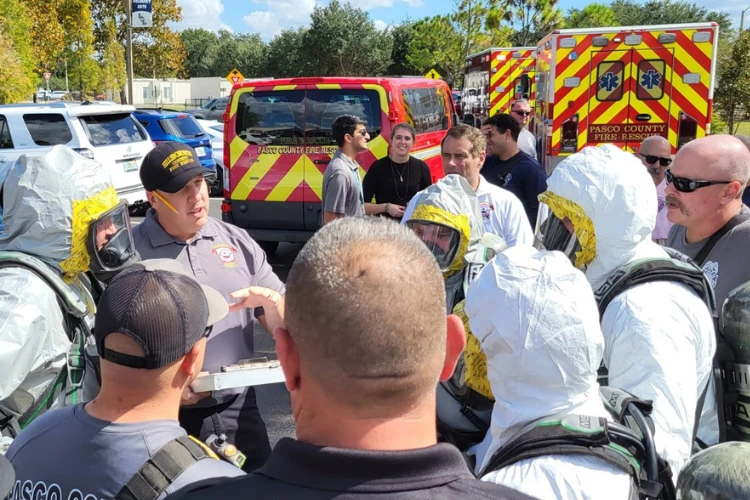One of the biggest challenges fire departments face today is managing vast data. Data continuously flows into the department, from incident reports and inspections to personnel information and electronic patient care records (ePCRs). This data needs to be reviewed and analyzed to inform and enhance operations.
With plenty of reporting requests from national and local organizations, effectively managing this “data avalanche” is crucial for operational efficiency and better decision-making. But where should you begin?
Many departments recognize that traditional paper-and-pen methods for tracking and storing information are no longer viable. The massive volume of incoming data, the required reports, and the more critical tasks that demand your team’s attention open a shift to electronic document and records management systems. Digital records are easy to create, sort, and review and can be accessed anytime and from anywhere, providing the flexibility and efficiency modern fire departments need. We shall cover in detail what exactly a fire records management software is, its benefits, and the key features that a Fire Records Management System must have.
What is Record Management Software(RMS)?
A Fire Records Management Software(RMS) is software designed to improve fire department operations, data collection, and community service. These tools help meet current and evolving demands with modules for incidents, personnel management, scheduling, properties and inspections, activities, permits, asset management, checklists, hydrants, and more.
Fire departments need a robust record-keeping software strategy to manage and organize critical information efficiently. An effective RMS strategy ensures that vital data, such as incident reports, training records, personnel information, and equipment inventory, is accurately recorded and easily accessible. Without a proper RMS strategy, important information can become lost or difficult to retrieve.
Implementing an RMS strategy helps streamline operations and boost efficiency by enabling standardized incident reporting, simplifying personnel management through centralized records and certifications, optimizing equipment and inventory, and providing valuable data analytics for informed decision-making. A well-planned RMS strategy improves overall performance and improves a fire department’s ability to respond effectively to emergencies.
Key Must-Have Features of Record Management Software for Fire Departments
1. Cloud-Based and User-Friendly Interface
An ideal electronic medical record software should be a cloud-based platform with a user-friendly interface, facilitating easy navigation and accessibility from various devices. This way, firefighters and administrative staff can input and retrieve data without extensive training, maximizing productivity and increasing adoption rates within the department.
Our complete record-keeping software for fire and EMS agencies is accessible via any browser with an internet connection without needing a separate mobile app. The FireWorks system integrates pre-plan and inspection functions, seamlessly connecting fire suppression and prevention efforts. This user-friendly interface ensures that crews and inspectors can easily access and update critical data, such as emergency contact information and tactical details, in real-time during emergencies and inspections.
2. Advanced Search and Retrieval Capabilities
With vast amounts of data stored within the RMS, advanced search and retrieval capabilities are essential for quickly locating specific information. The system should support sophisticated search filters and indexing functionalities, enabling users with relevant data precisely, saving time during emergencies and routine operations.
EPR FireWorks offers advanced search and retrieval capabilities. With dynamic dashboards and a powerful Business Intelligence (BI) reporting tool, departments can instantly retrieve data from over 250 pre-built reports or create custom reports tailored to specific needs. Our records management software always puts essential data, better decision-making, and operational efficiency at your fingertips.
3. Security and Compliance Measures
With sensitive information on board, fire departments must prioritize security and compliance measures within their RMS. This includes robust encryption protocols, role-based access controls, and adherence to industry regulations such as HIPAA, SOC 2, and ISO certifications. Implementing stringent security measures ensures data confidentiality, integrity, and availability while safeguarding against unauthorized access and data breaches.
Security and compliance are of utmost importance in the FireWorks RMS. Our records management system includes NFIRS-compliant incident reporting and NEMSIS 3.5-compliant patient care reporting, ensuring adherence to national standards. Robust security measures protect sensitive data, while compliance features support the various regulatory requirements, keeping your department aligned with industry standards and safeguarding your information.
4. Costs, Scalability, and Integration
When selecting an RMS, fire departments must consider initial costs, ongoing maintenance fees, and scalability options to accommodate future growth. Additionally, seamless integration with existing software systems and interoperability with external platforms are crucial for streamlining workflows and maximizing efficiency across the department’s operations.
Our record management software is designed to be cost-effective, scalable, and easily integrated with existing systems. The platform can grow with your department, with increased data and additional users, without significant cost increases. Integration with partners like ESRI and BRYCER ensures you can leverage the best mapping and compliance tools available, providing a perfect solution that fits seamlessly into your operations.
5. Future-Proofed Automation and Workflow Management
An RMS with automation capabilities and customizable workflow management tools improves operational efficiency and agility. Features such as automated report generation, task assignment, and notification alerts streamline processes, reducing manual intervention and mitigating the risk of errors. By future-proofing the RMS with scalable automation solutions, fire departments can adapt to changing demands and technological advancements for long-term viability and effectiveness.
Adopting FireWorks prepares your department for current demands and future challenges. Our record management software automates routine tasks like inventory tracking and maintenance scheduling. Also, visual data analytics and automated alerts keep your team informed and proactive, improving overall efficiency and readiness.
[Also read: 4 Signs It Time to Break up with your RMS ]
How EPR FireWorks Can Help your Fire Department with the right Record Management Software?
Having a robust fire RMS system like EPR FireWorks isn’t just about managing data—it’s about helping to manage your department’s efficiency and effectiveness. With its comprehensive suite of features tailored to your needs, from activities and permits to analytics and asset management, EPR FireWorks helps your team streamline operations and enhance safety for responders and the community.
EPR FireWorks ensures a seamless transition and long-term success by addressing common RMS challenges, offering intuitive design, and dedicated support. It provides tools and capabilities that enable teams to assess situations accurately and determine the best course of action. The goal is to offer a comprehensive overview that helps save lives and significantly impacts communities.
We’re here to help, so if you’d like to book a demo of our record management software, let’s get started so you get what you need.


